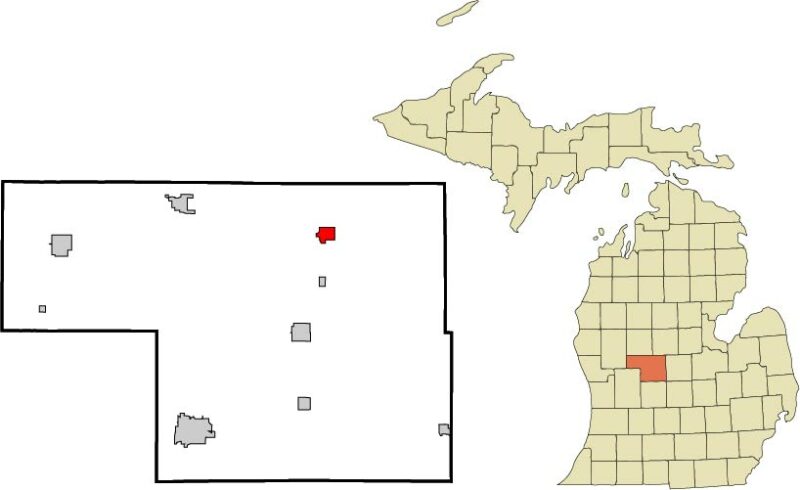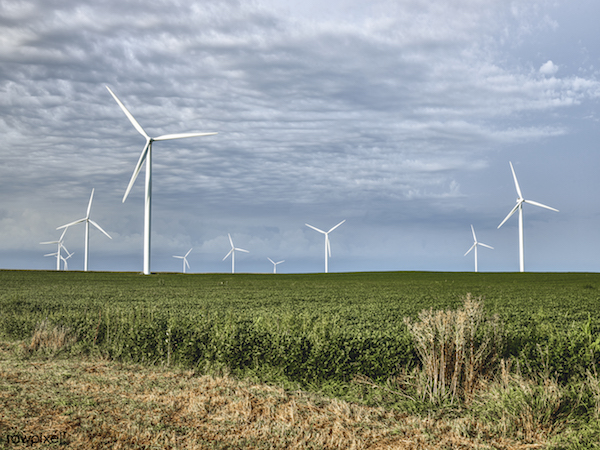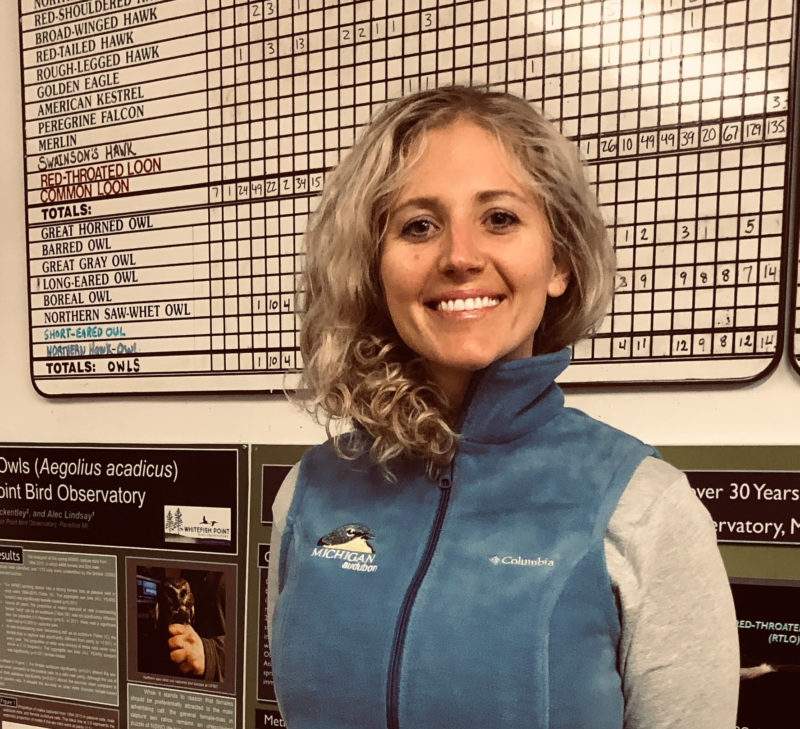The Montcalm Wind project is a 50,000-acre wind farm development owned by Apex Clean Energy, an independent renewable energy company founded in 2009 and based in Charlottesville, Va. With dozens of renewable energy projects in progress around the U.S., Apex is one of the fastest-growing companies in the renewable energy industry. The company’s project in Montcalm County is one that they will sell to a major energy company — similar to another of Apex Clean Energy’s projects in Michigan, the Isabella Wind project in Isabella County, which was sold to DTE and is now operational.
Project Planning Updates
As of December 2020, Apex Clean Energy reportedly had signed more than 100 leases with residents of 10 townships within Montcalm County, putting them nearly halfway to their goal. These 50,000 acres for the project will house approximately 75 wind turbines.
The Montcalm Wind project is currently in tier 3, a stage that assesses the proposed project’s suitability for its geographic area — including considerations to wildlife habitat and migratory pathways. Tier 3 is also the stage where environmental review and other considerations related to wildlife (such as habitat fragmentation concerns) and other environmental reviews are completed as part of best practices. The company has been open and willing to engage with wildlife biologists and organizations like Michigan Audubon and American Bird Conservancy — something we as a conservation organization consider real progress in the world of protecting birds.
Because the permitting process is lengthy at the township, state, and federal levels for developers, the Montcalm Wind project isn’t expected to come to fruition for another few years.
Community Meeting
In late February of 2021, Apex Clean Energy held a public meeting on the Montcalm Wind project, sharing its hopes of generating community engagement and support for the project and presenting the energy development in a positive light for county residents and landowners. Citing the benefits of wind over petroleum-based energy, Apex also touted rural community development advantages and their commitment to “not be disruptive to the community.” The company also shared with meeting-goers their interest in integrating the development’s turbines with existing farm practices to minimize the “not in my backyard” concerns from residents. Many residents, however, remain concerned and skeptical about the long-term effects associated with renewable developments of this size.
Community Concerns
Beginning in 2017, counties in the Thumb — another region of the Lower Peninsula prime for wind energy generation — began rejecting proposals for new wind developments. To many, it’s no surprise why: Over the last 15 years, wind turbines have been constructed in saturated pockets across the Thumb region. In a qualitative study conducted on these perceptions of Michigan residents, researchers aimed to “examine residents’ perceptions of personal costs and benefits in terms of social, environmental, or economic features that influence support of or resistance to wind farm development in four rural communities in eastern Michigan” (2010). Their findings also unveiled the following common issues reported from residents living near wind turbines in the Thumb region:
- Increased price of electricity with wind energy technology in place.
- Noise- and/or vibration-related disturbances from turbine rotation.
- Uncertainty surrounding the long-term effects of wind turbines on public health and the environment.
Why Montcalm County?
Renewable energy development companies assess potential sites for a multitude of characteristics that make the site, to their knowledge, most conducive to producing energy. According to Apex Clean Energy, Montcalm County is a qualifying candidate for a project this size because it offers:
- Sufficient wind resource.
- Open farm ground.
- Access to transmission.
- Sandy soil and pivot irrigation, both of which are suitable for turbines.

Considerations for Birds and Native Wildlife
A recent National Wind Coordinating Committee analysis of peer-reviewed research found evidence of bird and bat deaths from collisions with wind turbines due to changes in air pressure caused by the spinning turbines, and habitat disruption. From existing research, we understand that many adverse wildlife impacts can be mitigated through better siting of wind turbines and that the technology of wind energy is in a state of constant flux and innovation.
Michigan Audubon is committed to offering consultation with developers to proactively protect areas of key habitat for migratory and resident birds. We are also available to consult and advise on ecological and/or ornithological concerns or considerations with developers.
Apex has employed third-party biologists to survey avian use at various sites within the project’s geographic scope. Environmental assessments underway in Montcalm County for this project include the following:
- Wetland delineations.
- Surveying for avian use (i.e., eagles, raptor nests, etc.).
- Monitoring specific bat species.
Wildlife biologists have found that bats are most active when wind speeds are low. Using this information, the Bats and Wind Energy Cooperative concluded that “keeping wind turbines motionless during times of low wind speeds could reduce bat deaths by more than half without significantly affecting power production” (NWCC 2010).
Ways To Learn More
It’s helpful to learn about local zoning laws in your county. If you’re a property owner, you can talk with your local township board officials to learn what, if any, ordinances exist for solar and wind projects.
If you’re interested in this specific project and want to attend Apex Clean Energy’s future public meetings, you can sign up for updates on their website, apexcleanenergy.com.
Visit montcalmwind.com or facebook.com/MontcalmWind for more details about the Montcalm Wind project.

Wind turbines dominate the sky over the soybean fields of Franklin County, Iowa. Original image from Carol M. Highsmith’s America, Library of Congress collection.
~by Heather Good, Michigan Audubon executive director
This article appeared in the 2021 Spring Jack Pine Warbler.
In each issue of the Jack Pine Warbler this year, we will feature a piece connected to alternative energy in Michigan, community science and advocacy, and outreach that can help us protect our peninsulas for birds and people alike.
You can read Meeting the Demands for Alternative Energy and Its Impact on Michigan Birds from the 2021 Winter Jack Pine Warbler and stay tuned for more featured stories on this topic.

Heather was a member of Michigan Audubon’s Board of Directors, studied at the University of Michigan’s School of Natural Resources and Environment, and volunteered with birds of prey at the Leslie Science and Nature Center as an independent rehabilitator of raptors before beginning her tenure as executive director in 2016.
References
Arnett, E. B., M. M. P. Huso, J. P. Hayes, and M. Schirmacher. 2010. Effectiveness of changing wind turbine cut-in speed to reduce bat fatalities at wind facilities. A final report submitted to the Bats and Wind Energy Cooperative. Bat Conservation International, Austin, Texas.
Groth, T., and C. Vogt. 2014. Residents’ perceptions of wind turbines: an analysis of two townships in Michigan. Energy Policy 65:251–260.
NWCC (National Wind Coordinating Committee). 2010. Wind turbine interactions with birds, bats, and their habitats: A summary of research results and priority questions. Available: https://www1.eere.energy.gov/wind/pdfs/birds_and_bats_fact_sheet.pdf. (April 2021).
USFWS (U. S. Fish and Wildlife Service). 2010. Wind turbine guidelines advisory committee. USFWS, Washington, D.C. Available: https://www.fws.gov/habitatconservation/windpower/Wind_Turbine_Guidelines_Advisory_Committee_Recommendations_Secretary.pdf. (April 2021).

